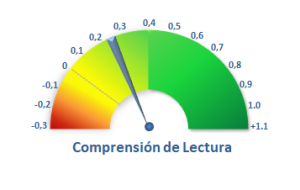Implementing institution: Greenford High School
Country: United Kingdom
Source: Education Endowment Foundation
Execution period: 2006 - 2014
Plataforma de Prácticas Efectivas:
To increase the narrative and communication skills of students with greater difficulties, improving their vocabulary and narrative skills.
Two programs that intervene in a complementary way on vocabulary and narration, under the modality of tutorials in small groups.
The program has a positive and statistically significant impact on the ability to understand text (+0.25 SD), but not on the ability to understand oral content.
Talk for Literacy is a program to strengthen narrative and oral comprehension skills for first-year secondary school students with language and communication difficulties. It is divided into two complementary subprograms: The Vocabulary Enrichment Intervention Program (VEIP), and the Narrative Intervention Program (NIP).
The initiative was developed by Victoria Joffe, a lecturer at the University of London, who carried out a first cycle of pilot projects in 2006 in 21 secondary schools in the capital. In order to deepen the experience and its results, Greenford High School decided to test the methodology on its students. Talk for Literacy has two learning goals: to promote the complex use of language (narration), and to promote reading comprehension (vocabulary enrichment).
Pedagogy is child-centred, meaning that it adapts to the child’s abilities and progress. In VEIP, techniques are taught to recognize word structure (prefix, suffix, roots) so that students can understand and learn new terms independently. The NIP program, on the other hand, focuses on the reading techniques (tone) and the different narrative registers. The VEIP and the NIP were developed to be complementary, considering, for example, that in the NIP sessions the concepts studied in the VEIP are reviewed. Both the VEIP and the NIP are implemented in two weekly sessions of between 45 and 60 minutes respectively, which are developed as follows: review of the fundamentals of the previous session, presentation of the tasks carried out (the “missions to be achieved”), presentation and summary of the content of the session and definition of the “missions to be achieved” for the following week.
Sessions are given in small groups, by an assisted tutor, a pedagogical assistant and language therapists. All of them were trained at the beginning of the program on methodology and, specifically, on the concept of “facilitating and getting answers”. It requires a series of practical techniques to encourage children to find the answers by themselves, without being asked by the teacher.
In England, the enrolment of children at elementary and secondary levels covers almost the entire population of attendance age (99.85% and 98.28% respectively by 2014). Net participation rates have been growing since 2006, especially at the secondary level (+6 percentage points). However, the OECD’s PISA survey has highlighted a decline in reading literacy levels among part of the 15-year-old English population since 2011.
In 2013, the National Foundation for Educational Research (NFER) evaluated the Talk for Literacy program to assess its impact on the reading abilities of grade 7 students. 235 students were selected and randomly divided into two groups: the first group received the two interventions (VEIP and NIP), while the other group followed conventional classes. The comparison of the results of the intervention group with those of the control group allowed us to highlight a positive impact of 0. 25 SD on students’ ability to understand the contents of the text.
The program also has a positive, but not statistically significant, effect (0.20 SD) on reading ability. Teachers interviewed indicate that the greatest progress has been observed in the students’ communication skills. The costs of the program are relatively low (£29 per student), so Talk for Literacy represents a timely innovation to address the weaknesses in vocabulary and storytelling of secondary school students.
Impact of intervention:

Charts: Impact measured in standard deviations of the intervention group compared to the control group
Link: https://educationendowmentfoundation.org.uk/our-work/projects/talk-for-literacy/
Report: Ver informe
Other documents:
Tags: